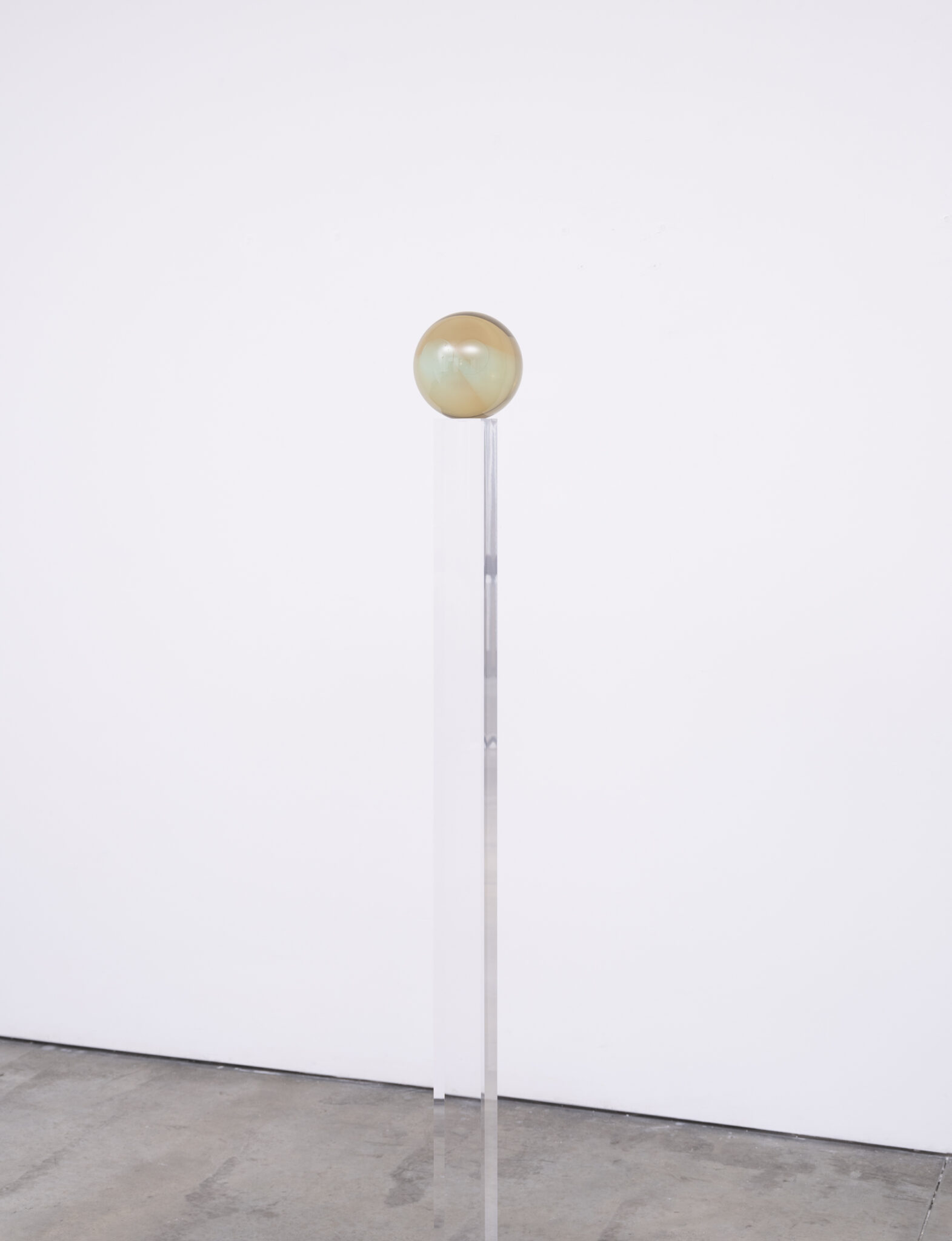Helen Pashgian is a pioneer and pre-eminent member of the 1960s Light and Space movement in Southern California. Over the course of her career, Pashgian has produced a significant series of sculptures comprised of vibrantly colored columns, discs, and spheres that often feature an isolated element appearing suspended, embedded, or encased within. Using an innovative application of industrial epoxies, plastics, and resins, Pashgian’s works are characterized by their semi-translucent surfaces that appear to filter and somehow contain illumination. Pashgian thinks of her works as “presences” in space, which do not reveal everything at once. One must move around her sculptures to observe changes: coming and going, appearing and receding, visible and invisible – a phenomenon of constant movement. This touches on the mysterious, the place beyond which the eye cannot go. Trained as an art historian with a focus on the Dutch Golden Age of the 17th century, Pashgian’s reverence for Johannes Vermeer, the painter of light, has been fundamental to her longstanding interest in the effects and perception of light. While she has gravitated towards experimenting with non-traditional materials, her primary concern has always been to maintain light as the object and subject of her work. For Pashgian, light is not simply a metaphor, symbol, or allegory; light itself is both the medium and the message. Her work can be found in numerous public and private collections internationally, including the Los Angeles County Museum of Art, Los Angeles, CA; Museum of Contemporary Art, San Diego, CA; Palm Springs Art Museum, Palm Springs, CA; Portland Art Museum, Portland, OR; and Santa Barbara Museum of Art, Santa Barbara, CA.
[excerpted from Lehmann Maupin Gallery website: lehmannmaupin.com]

